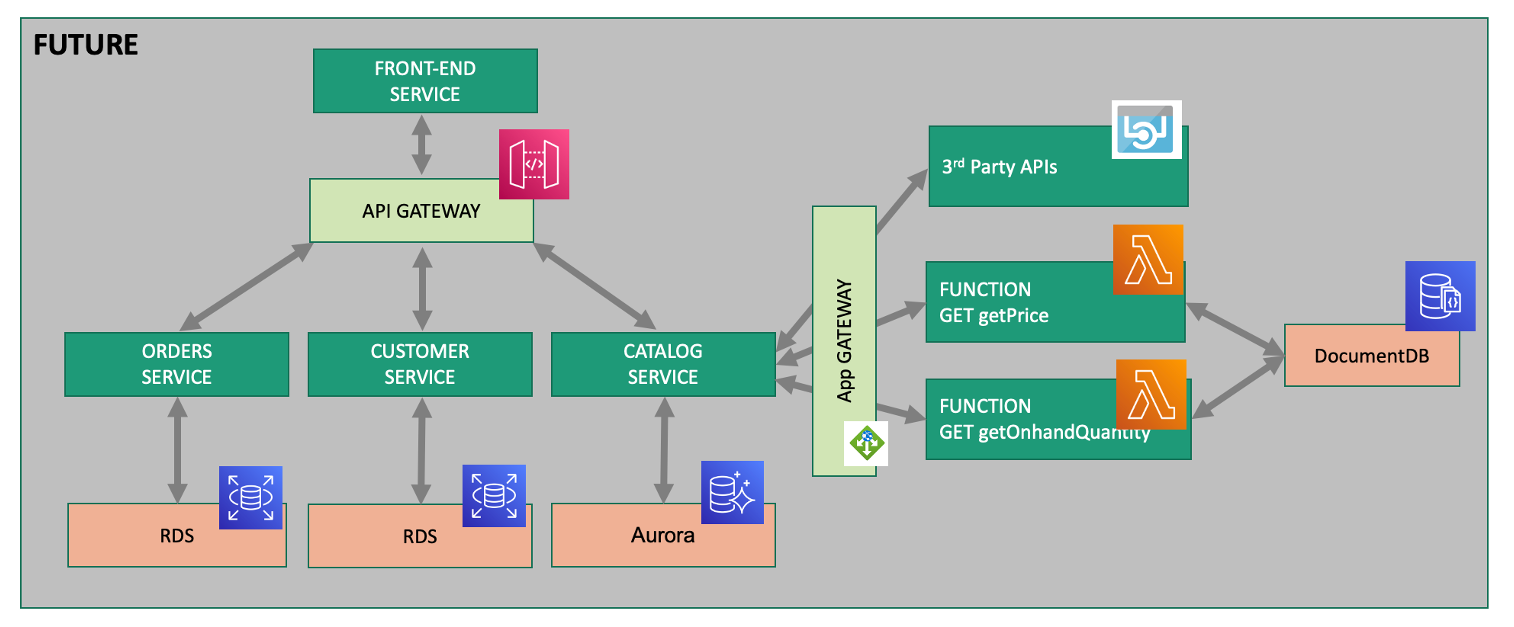Summary
Summary
While migrating to the cloud, you want to evaluate if your migration goes according to the plan, whether the services are still performing well or even better than before, and whether your new architecture is as efficient as the blueprint suggested. Dynatrace helps you validate all these steps automatically, which helps speed up the migration and validation process.
Having the ability to understand service flows enables us to make smarter re-architecture and re-platforming decisions. With support for new technologies like Kubernetes, you have confidence to modernize with a platform that spans the old and the new.
Over time, you can imagine that this sample application will be further changed to add in other technologies like AWS Lambda and other PaaS services like AWS Relational Database Service (RDS) or Amazon Aurora - MySQL and PostgreSQL-compatible relational database databases and virtual networking Amazon API Gateway as shown in the picture below.

💥 TECHNICAL NOTE
We will not cover this, but organizations are establishing DevOps approaches and establishing Continuous Integration (CI) pipelines to build and test each service independently. Then adding Continuous Deployment (CD) to the process too that vastly increase our ability to delivery features faster to our customers. Dynatrace has a number of solutions to support DevOps that you can read about here
💥 TECHNICAL NOTE
Dynatrace sees a lot of demand for Lambda serverless compute service and a slew of new capabilities that you can read about in these Dynatrace blogs
Checklist
In this section, you should have completed the following:
✅ Install the Dynatrace Operator and sample application
✅ Review how the sample application went from a simple architecture to multiple services
✅ We examined the transformed application using service flows and backtraces